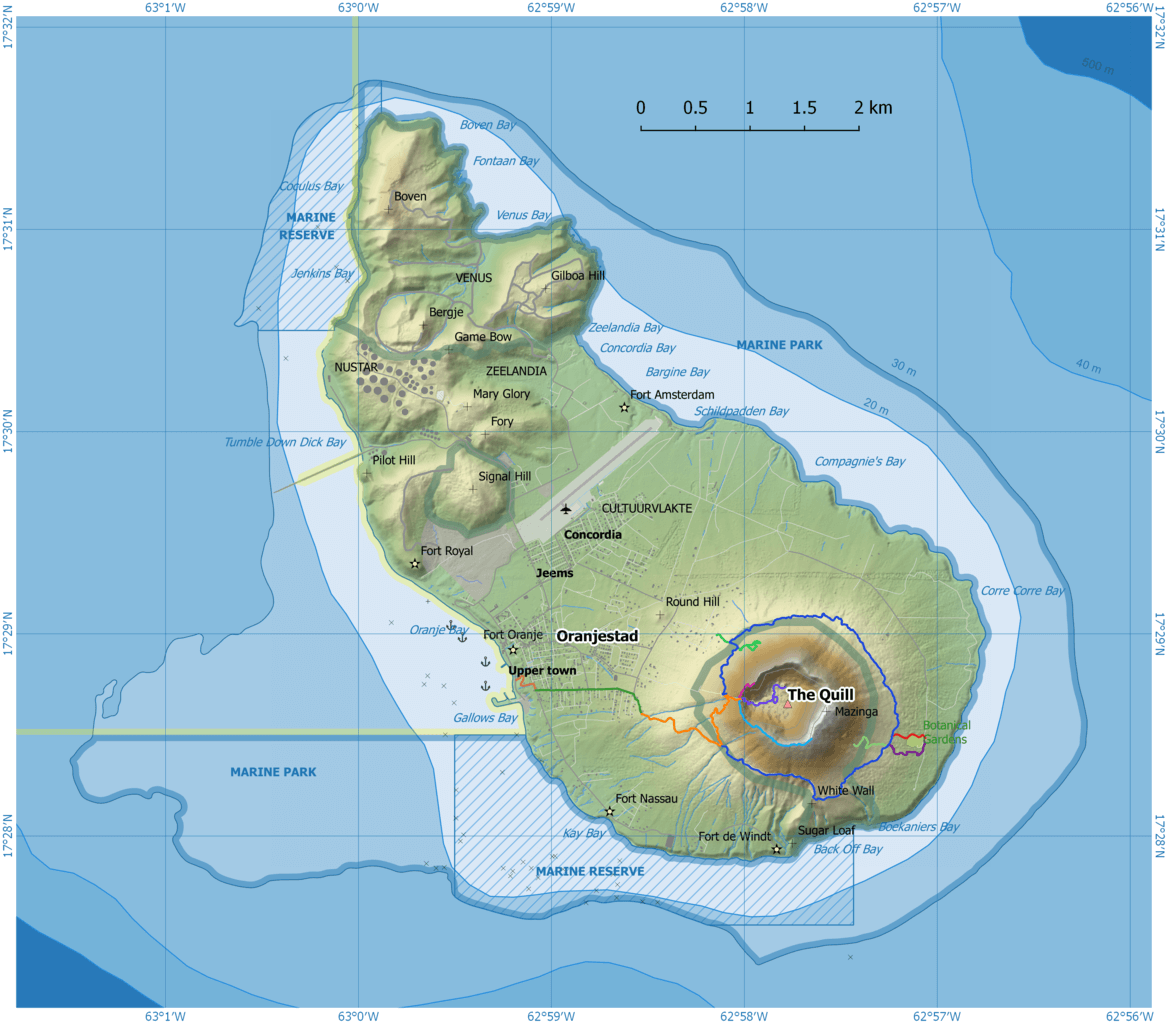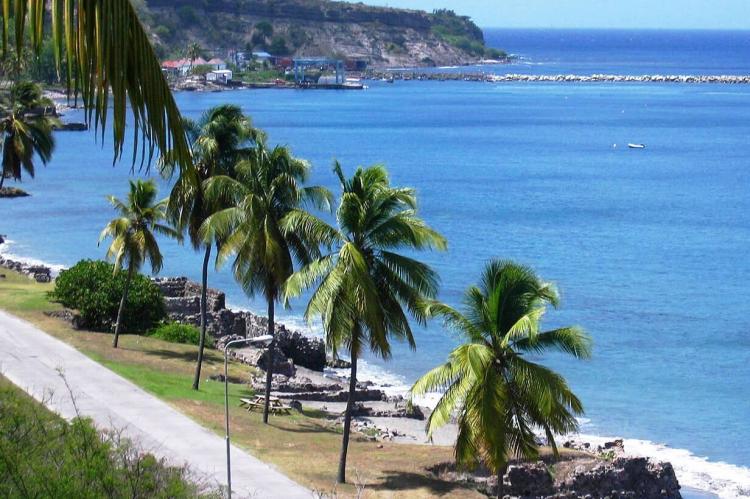Sint Eustatius National Marine Park: A Sanctuary of Caribbean Marine Biodiversity
The Sint Eustatius National Marine Park is a vital conservation area that encircles the entire island of Sint Eustatius in the northern Leeward Islands. It plays a crucial role in protecting the island's rich marine biodiversity, safeguarding habitats that range from vibrant coral reefs to sandy seabeds.
The Underwater Wonders of Sint Eustatius: Exploring the National Marine Park
The Sint Eustatius National Marine Park, located in the northern Leeward Islands of the Caribbean Sea, is a vital conservation area that encircles the entire island of Sint Eustatius. Established in 1996, the Park plays a crucial role in protecting the island's rich marine biodiversity, safeguarding habitats that range from vibrant coral reefs to sandy seabeds. Covering approximately 2,750 hectares (6,800 acres), the Park is a testament to the region's commitment to marine conservation and sustainable tourism, offering unique opportunities for diving, snorkeling, and marine research.
Geographical Setting and Boundaries
The Park extends from the high-water mark on the shores of Sint Eustatius to a depth of 30 meters (100 feet), reaching up to 3 kilometers (1.8 miles) offshore. This extensive area covers a variety of marine environments, from shallow coastal waters to deeper offshore zones. The island, part of the West Indies, is situated on an extinct and dormant volcano, creating a diverse underwater landscape that includes volcanic formations such as drop-off walls, volcanic 'fingers,' and the distinctive spur and groove zones in the Southern Reserve.
Ecosystems and Biodiversity
Sint Eustatius National Marine Park is renowned for its rich and diverse ecosystems, which include coral reefs, seagrass beds, sandy seabeds, and open ocean communities. The Park is home to some of the healthiest coral populations in the Caribbean, with coral cover in some areas reaching up to 50%. The reefs, formed on the remains of volcanic activity, shelter a wide array of marine species, including sea horses, octopuses, lobsters, manta rays, sharks, and turtles.
Three species of sea turtles—the Leatherback (Dermochelys coriacea), the Green Turtle (Chelonia mydas), and the Hawksbill (Eretmochelys imbricata)—use the sandy beaches of Sint Eustatius for nesting. The Park also lies on the migratory route of Humpback Whales (Megaptera novaeangliae), which can be seen in the surrounding waters from January to April.
Conservation and Sustainable Tourism
The Park is divided into two marine reserves—the Northern Reserve and the Southern Reserve—where fishing is strictly prohibited to protect aquatic life. Anchoring is also banned throughout the Park to prevent damage to the delicate coral reefs. Instead, dive moorings have been installed to support sustainable tourism practices, allowing visitors to enjoy the underwater beauty without harming the environment.
Diving in the Park offers the chance to explore natural reefs, historical shipwrecks from the 1700s, and modern artificial reefs. These underwater sites attract a variety of marine life and provide an unforgettable experience for divers. Snorkeling is another popular activity, especially in Oranje Bay, where remnants of Sint Eustatius's colonial past, such as cannons, anchors, and submerged sea walls, can be explored.
Historical Significance
The waters surrounding Sint Eustatius are rich in natural beauty and steeped in history. The Park includes shipwrecks dating back to the 18th century and remnants of the island's significant role in regional trade during the colonial era. These historical artifacts, now home to diverse marine life, offer a unique combination of cultural heritage and natural conservation.
Environmental Challenges
While the Sint Eustatius National Marine Park is a haven for marine biodiversity, it faces ongoing environmental challenges. The region is susceptible to the impacts of climate change, including rising sea temperatures and ocean acidification, which threaten coral health. Additionally, the Park's proximity to international shipping routes raises concerns about pollution and the risk of invasive species.
Continuous monitoring and conservation efforts are essential to address these challenges. The Park's management works to maintain the health of the ecosystems through strict regulations and community involvement, ensuring that this marine sanctuary remains a thriving environment for future generations.
Conclusion
The Sint Eustatius National Marine Park is a vital conservation area showcasing the Caribbean Sea's rich biodiversity and historical significance of the Caribbean Sea. With its diverse ecosystems, historical shipwrecks, and commitment to sustainable tourism, the Park offers a unique glimpse into the island's natural and cultural treasures. As a marine conservation model, it plays an essential role in protecting the island's underwater ecosystems, ensuring they continue to thrive for generations.

Sint Eustatius National Marine Park map.
